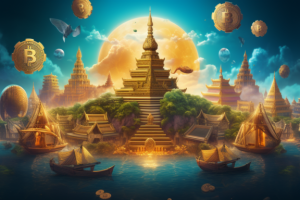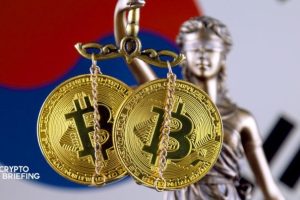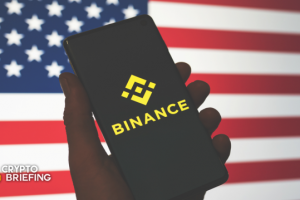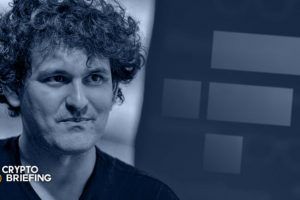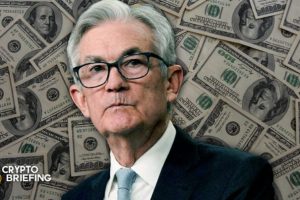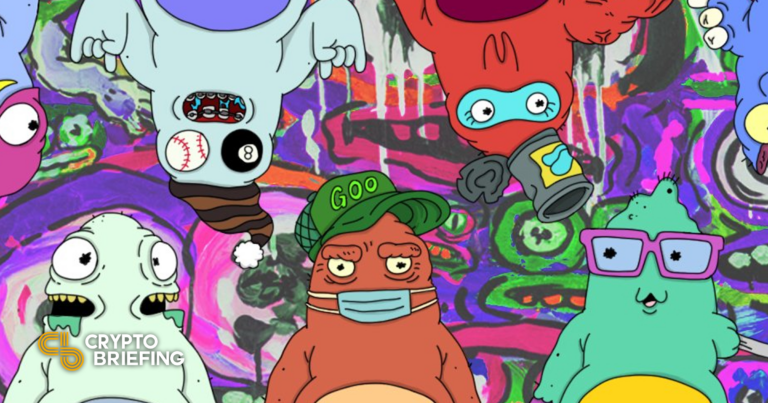
Key Takeaways
Rick and Morty co-creator Justin Roiland and crypto investment firm Paradigm are launching an NFT collection called Art Gobblers.
Gobblers essentially serve as decentralized art galleries.
The collection’s tokenomics, however, seem to reward early Gobbler owners at the detriment of future investors.
Share this article
Art Gobblers is expected to launch in twenty days. While the new Factory NFT collection markets itself as a self-sustaining art ecosystem, its tokenomics appear to reward early adopters disproportionately.
Decentralized Art Galleries
A new kind of NFT collection is entering the crypto scene with the upcoming launch of Art Gobblers.
Spun up by Rick and Morty co-creator Justin Roiland and crypto investment firm Paradigm, Art Gobblers aims to be a self-sustaining “decentralized art factory.” The collection’s free mint is scheduled to go live on Halloween.
The concept is relatively simple. The collection contains 2,000 unique Gobbler NFTs, all of which function as transferable on-chain art galleries. Under certain conditions, a Gobbler can digest a piece of art and add it to its “belly gallery”; if the Gobbler is subsequently sold, all of the art it has assimilated is sold along with it. The mechanism, therefore, allows owners to curate their Gobbler bellies as they wish: a Gobbler can be used to collect generative art, portraits, autographs, cat pictures, anime—whatever the owner wants.
However, the internal mechanics of the NFT collection are surprisingly complex and involve tokenomics reminiscent of other crypto projects such as Olympus DAO. Crypto Briefing takes a close look at the nuts and bolts inside the Art Gobblers experiment.
Art Gobblers Economics
The Art Gobblers project has various components, the three main ones being Gobblers, GOO, and Pages.
The Gobblers themselves are NFTs. When the collection launches, there will be 2,000 Gobblers available for minting, with 300 of them (15% of the supply) reserved for the development team. The collection will be expanded by an additional 8,000 Gobblers over a period of ten years at an initial rate of approximately 200 new Gobblers per month. The core team is marked to receive 10% of these new Gobblers.
Gobblers produce ERC-20 tokens called GOO. The GOO tokens can be used to create new Gobblers and blank Pages. Furthermore, GOO can be left to auto-compound within a Gobbler; the more GOO a Gobbler contains, the more GOO it will produce. There is no cap on GOO supply, meaning that the token supply will expand with increasing speed as time goes by.
Art Gobbler Pages are also NFTs. They are created with GOO and function as on-chain canvases. “Blank” pages allow their owners to mint any piece of art into an NFT. These “full” pages can then be traded and collected on their own or fed into a Gobbler—passing on ownership of the individual Page to the Gobbler owner.
Since GOO supply is set to expand forever, Gobbler NFTs and Page NFTs are not sold at fixed GOO prices. Instead, the project uses a VRGDA mechanism for pricing. VRGDA essentially fixes a set schedule for NFT issuances: prices rise if demand is higher than expected; if demand is lower than expected, prices fall. Initially, 69 Page NFTs will be created each day; issuance is set to lower to 10 NFTs a day over the course of eight months.
Familiar Ponzinomics
The stated purpose of Art Gobblers’ tokenomics is to create a flywheel, meaning that the project’s growth is intended to fuel more growth, which would fuel even more growth, ad infinitum. If Gobblers become popular, the demand for Page NFTs would increase, incentivizing artists to use them to produce eye-catching art, making Gobblers more popular.
But there’s a catch. Under the current GOO monetary policy, the logical move for Gobbler owners is to keep auto-compounding the GOO they produce to keep up with the token’s inflationary pressure. Otherwise, their share of the GOO total supply would quickly decrease, and so would their purchasing power of Gobbler and Page NFTs, according to the VRGDA mechanics.
However, this means that early Gobbler owners will likely control a significant amount of the total GOO supply after some time. No matter how much GOO newly minted Gobblers try to produce in the next few years, it will likely fail to reach the levels of GOO production attained by Gobblers from the genesis mint since the latter will keep increasing their output as they keep accumulating GOO. Of course, it would always be possible to simply buy sufficient GOO to compete with genesis Gobbler owners, but that option is likely to be costly. In effect, the GOO economy could simply end up concentrating in the hands of a few Gobbler whales.
In this regard, Art Gobblers seems similar to Olympus DAO, which created a monetary system with extremely high yields (and emissions) to incentivize users to bond their funds to the protocol. The mechanics disproportionately rewarded early protocol users, turning a few of them into OHM whales. One such whale initiated a 30% sell-off in January when it decided to dump its holdings.
It’s also worth noting that neither Roiland nor Paradigm intends to keep working on Art Gobblers once the project launches. As the Paradigm team puts it, “Art Gobblers is launched as a finished product, designed to bootstrap a self-sustaining ecosystem.” This means that inequalities arising from the GOO emissions schedule are unlikely to be addressed down the road by the projects founders.
Disclosure: At the time of writing, the author of this piece owned BTC, ETH, and several other cryptocurrencies.
Share this article
The information on or accessed through this website is obtained from independent sources we believe to be accurate and reliable, but Decentral Media, Inc. makes no representation or warranty as to the timeliness, completeness, or accuracy of any information on or accessed through this website. Decentral Media, Inc. is not an investment advisor. We do not give personalized investment advice or other financial advice. The information on this website is subject to change without notice. Some or all of the information on this website may become outdated, or it may be or become incomplete or inaccurate. We may, but are not obligated to, update any outdated, incomplete, or inaccurate information.
You should never make an investment decision on an ICO, IEO, or other investment based on the information on this website, and you should never interpret or otherwise rely on any of the information on this website as investment advice. We strongly recommend that you consult a licensed investment advisor or other qualified financial professional if you are seeking investment advice on an ICO, IEO, or other investment. We do not accept compensation in any form for analyzing or reporting on any ICO, IEO, cryptocurrency, currency, tokenized sales, securities, or commodities.
See full terms and conditions.


